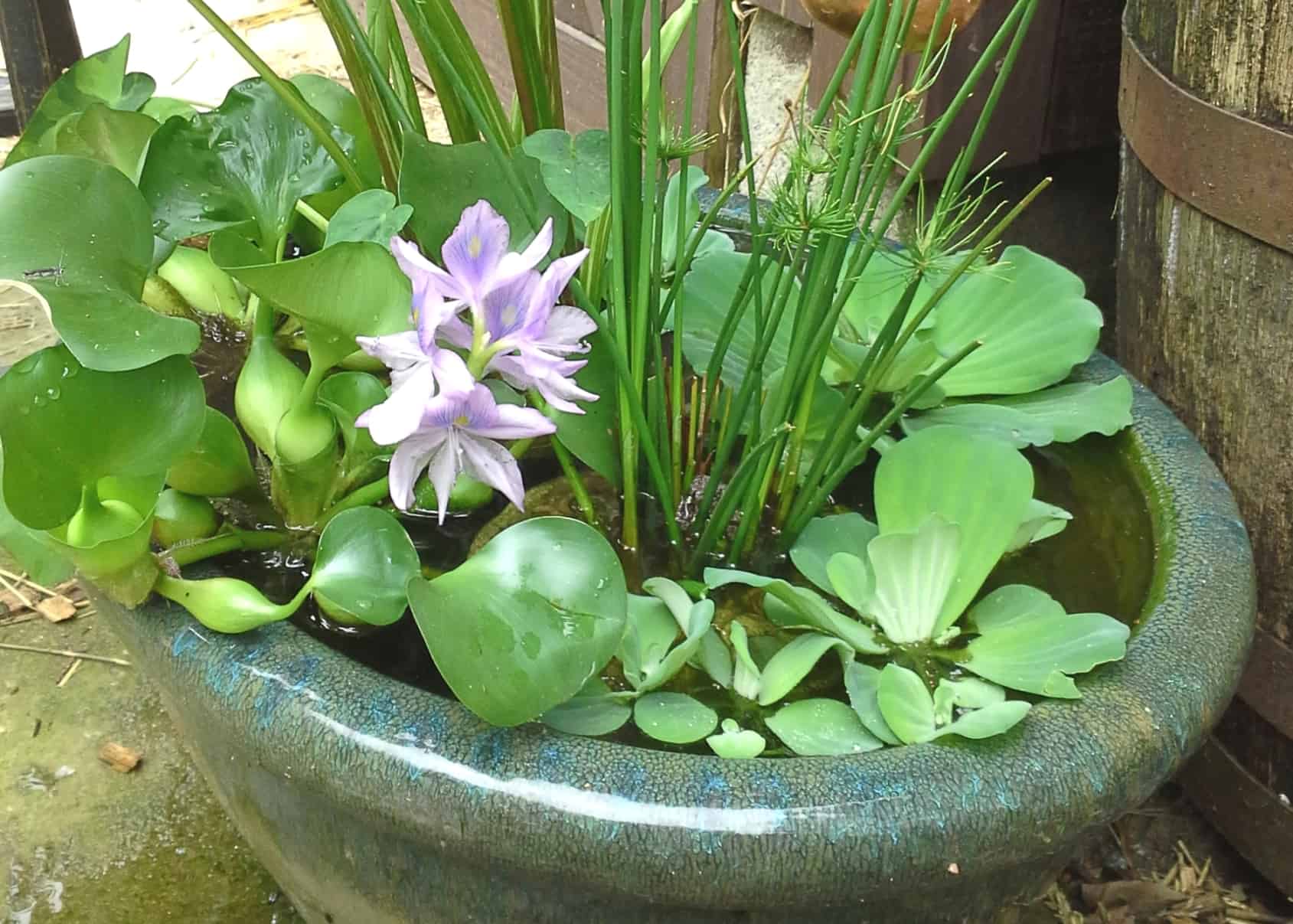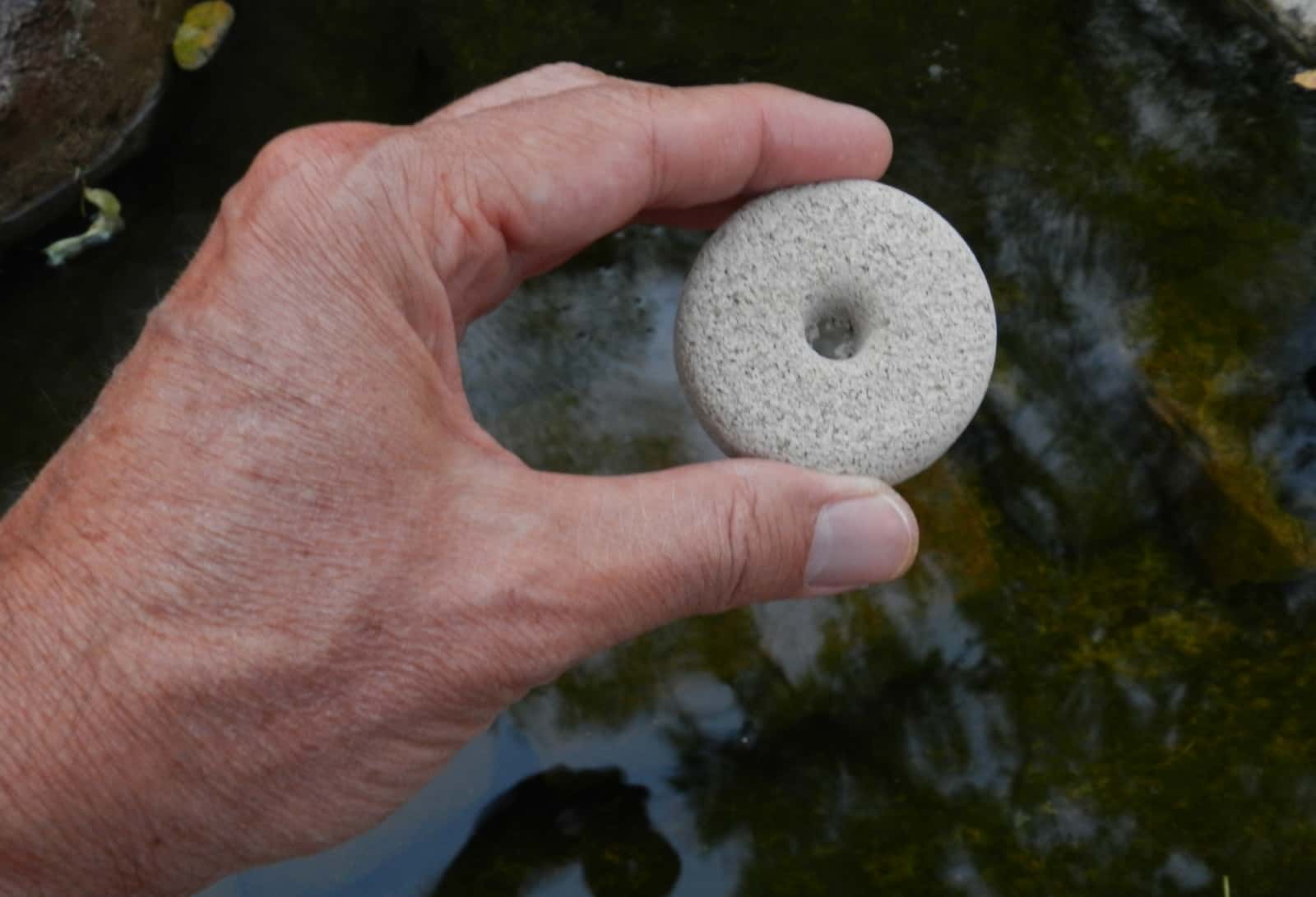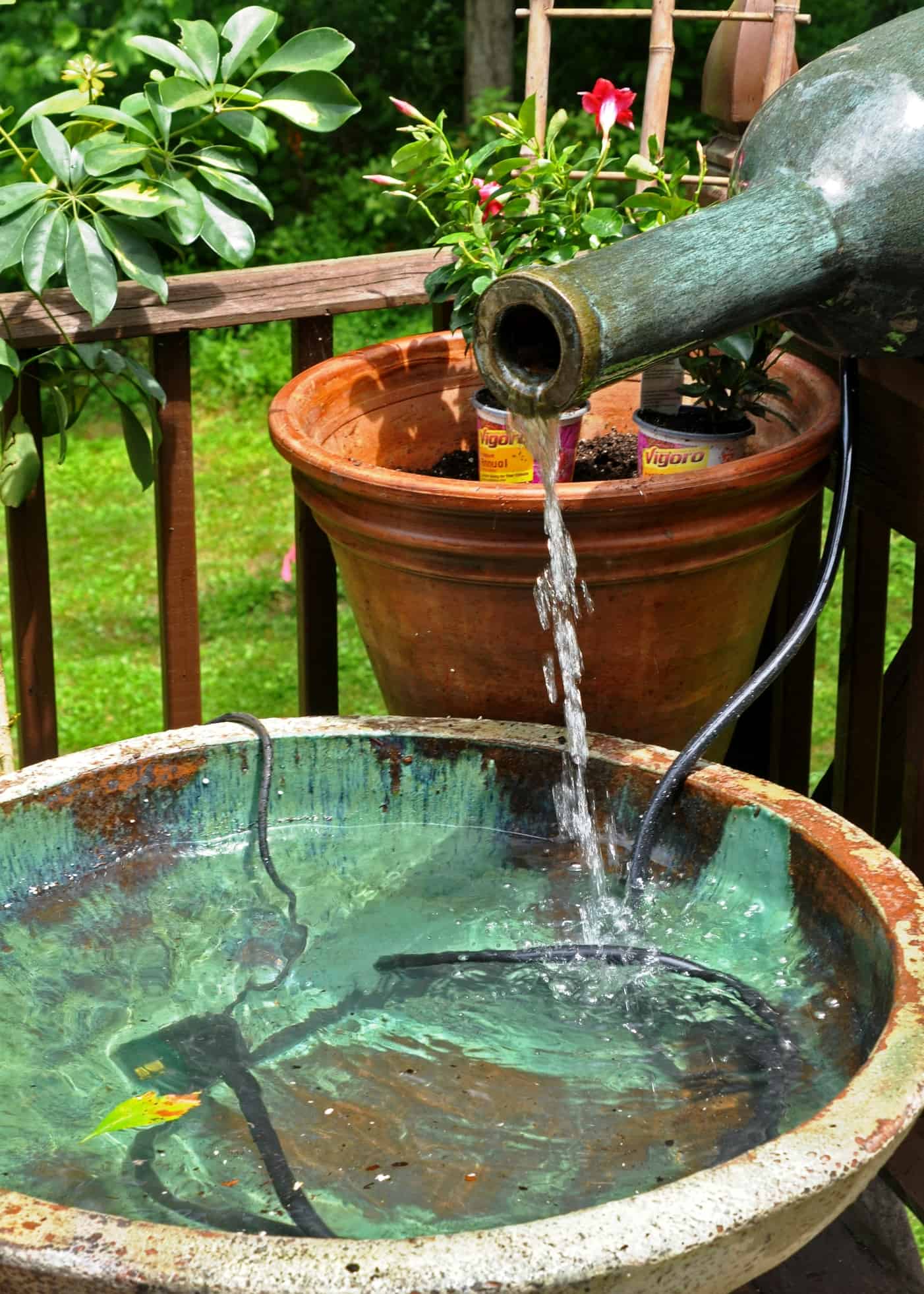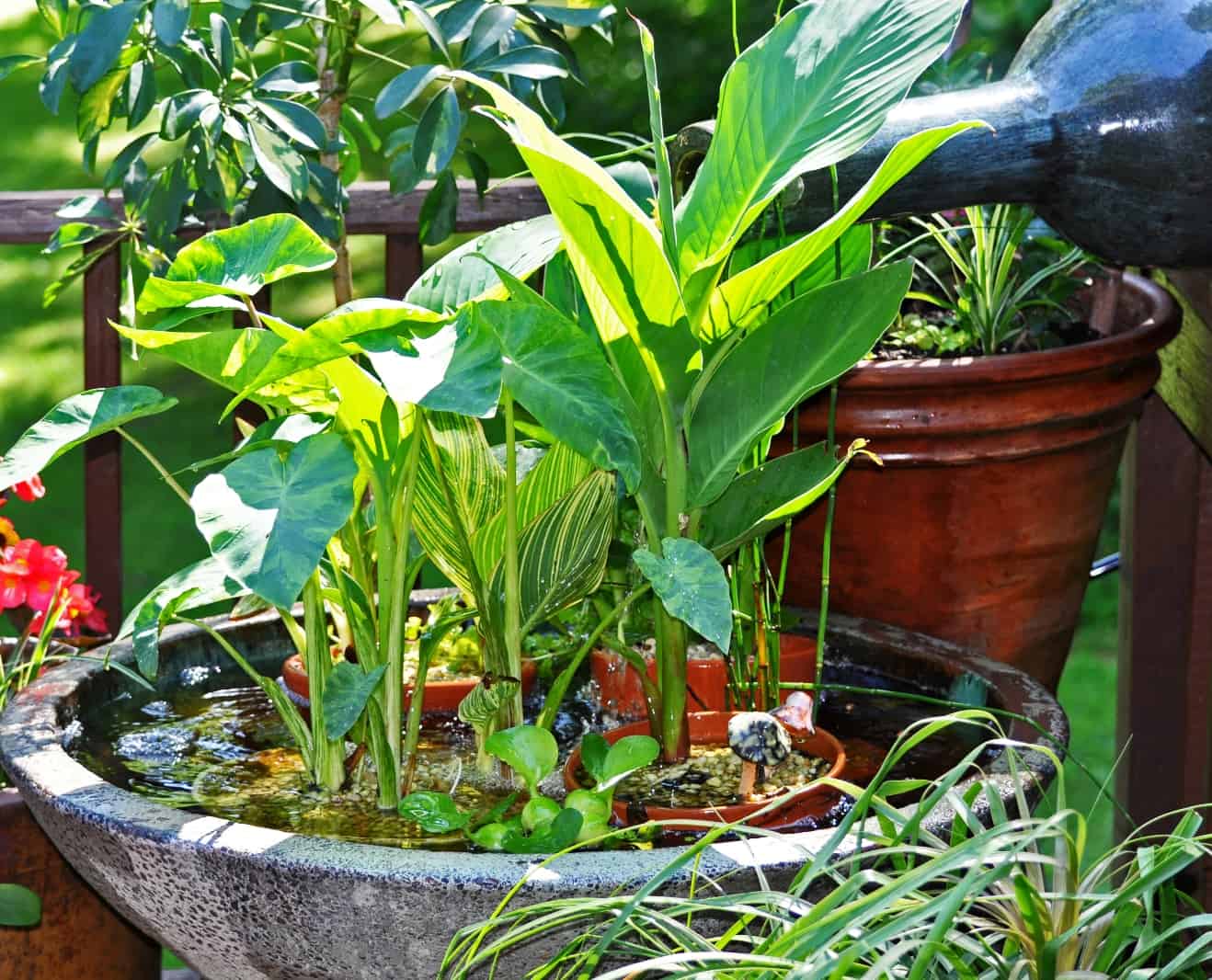
When you install a water feature in your garden, you install a delightful destination. Friends will marvel and birds and bees will rejoice. But a large water feature, such as a pond with a rock wall covered by cascading water, can require a great deal of work to create and maintain. Instead, create a small container water garden that makes a big impact on your yard.
There are three basic types of container water features: Still Water, Splashing Water and Disappearing Water.
Still Water Garden
The simplest kind of water feature is a Still Water garden. In this type of container water garden feature, the water stays still. The water provides a nice visual respite from the garden, but it provides no movement to attract your attention.
To create a Still Water feature, start by finding an attractive bowl or pot without drainage holes. Fill it with water and add a few aquatic plants that prefer still water – such as water lily or lotus. As with all gardening endeavors, research the plants you wish to grow.
Still Water gardens are great for decks and patios. They are equally stunning near the front of a garden bed, where surrounding plants will soften the edge of the container. A still container water garden will require mosquito control such as goldfish.

Or you can simply add chemical-free Mosquito Dunks, which use a bacterium called BTI to kill mosquito larvae for up to 30 days. Don’t worry, Mosquito Dunks are organic and will not harm plants, beneficial insects, birds, fish, pets or people. Buy Mosquito Dunks on Amazon.
Splashing Water Feature
OK, you’ve decided to create a container water garden. Adding a pump to a Still Water container water garden ups the game, because there’s something magical about moving water. To get water moving, you need to add a pump. Pumps are rated based on the strength of the motor. A smaller, 80 gallons-per hour (GPH) pump will create bubbling water, whereas a 300-GPH pump will give you a sizeable splash. With a bit of ½ inch flexible tubing and a creative mind, you can really create an impressive fountain.

Pumps get dirty, so at least once every month make sure to take them out of the water and brush or spray away the buildup around the intake screen.
A “Disappearing” Water Feature
In recent years, a trend has emerged towards large urns or pots that bubble their contents away into a hidden reservoir below. You can buy a kit to make this an easy installation, or put it together on your own. Either way, you’ll want to start with a good-looking container.
Like a Splashing Water feature, a Disappearing Water garden also requires a pump and tubing. If you need some help with design or installation, check out one of the many how-to videos on YouTube.
Maintenance for Your Container Water Garden
As with all gardening endeavors, your growing zone will dictate your actions when the growing season ends. In USDA Zones 9-11 you may still be able to wow winter guests with a water garden, but if you live in colder climates your water feature will need to be drained.

This means bringing plants into a heated living space or greenhouse, or allowing them to go dormant in an above-freezing basement or garage, or treating them like annuals and letting them fend for themselves. Your decision will vary based on the type of plant (and no doubt) the price you paid for it.
Until the weather cools off, enjoy your container water feature!
Home, Garden and Homestead staff writers are always looking for great story ideas about homes, gardens, homesteads and food & drink. If you are interested in vegetable gardening, read Grow More Vegetables in a Square Foot Garden. If you love roses, read Best Roses for Backyard Gardens.
Please check this site often for new stories. Also check out the Home Garden and Homestead Facebook page and follow us on Pinterest and Instagram. As an Amazon Associate, this website gets a small commission on eligible sales. Thanks for supporting Home, Garden and Homestead!



Thanks for this article. I am inspired! I’ve wanted a pond for years, but what I envisioned was too Herculean. This is a manageable way to, if you’ll parden the pun, get my feet wet.
I have a question. I have a hydrangeas Bush I was wondering why it didn’t bloom this year. I cut it back in the fall.
Sandy–
Hydrangea bushes should be pruned in late fall or early spring.